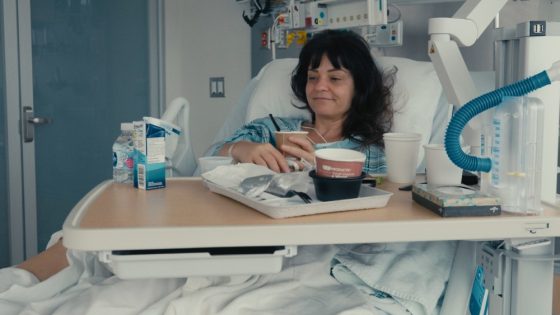Despite being a tad too long and a trifle repetitive, the documentary essay “Confessions of a Good Samaritan” from American helmer Penny Lane is a thought-provoking personal investigation into a subject rarely examined: the nature of altruism. Created in the context of Lane’s decision to donate one of her kidneys to a stranger, it explores the science, history and ethics of organ donation, as well as the motivations behind her selfless action. The low-budget production benefits from an articulate and charismatic lineup of expert interviewees, fascinating archival footage and some welcome humor. It marks the first title that production company Sandbox Films is releasing theatrically.
For the record, Lane thought about donating a kidney long before she thought of making a film about organ donation. In a direct address to the audience, she insists that she feels weird and bad that people might think she did it just for the film. Moreover, as she repeats throughout the production, she finds being on camera horrifying. She’s far more comfortable being the person asking the questions, as clips from her previous docus “Listening to Kenny G” and “Hail Satan” illustrate.
Why donate? Back in 2017, Lane was feeling gratitude for her situation in life and considering ways that she could give back. A non-directed kidney donation seemed like a thing that she could do that would require a fairly minimal amount of pain, suffering and risk from her, but would be life-saving for someone else, especially since America faces a desperate organ shortage.
The statistics are shocking. In the United States, nearly 100,000 people are listed on a national database for kidney transplantation, but perhaps three-quarters of them will die before an appropriate match is found. Yet the choice to make a live, non-directed donation is relatively rare. As Lane hears from others and experiences for herself, many friends and relatives regard the would-be donor as crazy.
Part of what makes the documentary relatable is the fact that Lane has direct experience in kidney donation, yet, paradoxically, the least engaging parts of the film are her extended speculations about her motivations and feelings. She offers these as a direct address to the audience in close-up or through text on a computer screen in longish, often repetitive scenes. In contrast, it’s her interviewees and the archival footage that prove most educational and mind-blowing.
Among the interesting interviewees is psychology professor Abigail Marsh, whose personal history prompted her interest in understanding the neural and cognitive basis of empathy, altruism, aggression and psychopathy. When studying brain scans of people diagnosed with psychopathy, Marsh hypothesized that perhaps they represented one end of a continuum, and that the brains of people expressing more empathy than the average joe would also be differently wired.
Marsh explains that the brain’s amygdala is linked to all of our sensory processing systems and gives a corresponding emotional response to the information processed. Psychopathic brains have amygdalas that on average are up to 20% smaller than normal people. Altruistic people have amygdalas which are around 8% larger than average. The scan she performs on Lane proves that the filmmaker’s amygdala is quite large.
Meanwhile, advocate and author Dr. Sally Satel, a recipient of a donated kidney, makes a compelling argument for government legislated rewards for altruistic organ donation, since it is against the law for a recipient to offer cash or other financial benefits to a donor and for a donor to accept them. Given that non-directed donations comprise only 2% of all the kidney transplants performed and black-market organs comprise 10%, the title of her book neatly sums up the problem: “Altruism Is Not Enough.” Archival footage showing a 1984 Senate inquiry (chaired by a young Al Gore) into an organs-for-money scheme shows that doctors have been thinking about this issue for some time.
Bio-ethicist and psychiatrist Dr. Jacob Appel helps Lane understand the history of progress in kidney transplantation, which came rapidly after the discovery of cyclosporine, an immunosuppressive agent used to treat organ rejection post-transplant. And he describes to her a possible future of organs being grown inside genetically modified pigs.
In contrast to the theoretical issues that Appel puts forward, the ebullient surgeon Dr. Keith Melancon is literally hands-on. He describes his pleasure at seeing a donated organ “pink-up” inside the body of the recipient.
The film makes a virtue of its small budget through incorporating a digital esthetic throughout.
Source Agencies



